This past Monday, I refired a piece that I'd fired in the spring. I'd thought about refiring it but decided to wax it and try to sell it. It didn't sell at any of the sales I had in the last 5 weeks so I decided to refire it. I wasn't sure what would happen since I'd already put Johnson's floor wax on it and polished it. I thought it would probably just burn off, and I was right. In fact, it became one of the most successful pit fired pieces that I've ever made. I also fired three other pieces, all for the first time, and none of them turned out well. The four pieces were fired in two different containers. One cracked and had to be thrown away, and two had very little color at all and will need to be refired. There was one, however, the one I was refiring, that turned out well.
One other thing that was different about this firing was the Miracle Gro that I used. I always put Miracle Gro around my pots because it has lots of stuff that creates good color on pots. In this case, I'd left the bag in a spot outside where water got inside and had melted almost all of it. I almost threw it out but decided to add it and see what happened. Since I didn't have that much, I put it around only the pot I was refiring. I noticed something unusual when the fire had burned down but the coals were still very hot: strong green flames were coming up on both sides of the pot for at least 20 minutes which was quite unusual for this time in the firing. I'd also used copper carbonate in powder form around all of the pots, but none of them showed any green flames at this time except around the one around which I'd poured the liquid Miracle Gro. In my next firing I'm going to purposely mix Miracle Gro with water and maybe copper carbonate as well and adding it using a squirt bottle. It would certainly be easier to apply and would be easier to keep off the surface of the pot which can cause problems.
Below are photos of the pot after the first pit firing and then after the refiring. Let me know if you have any comments or questions about any of this.
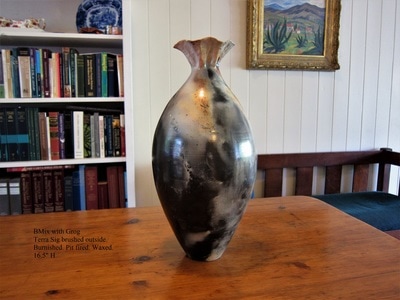



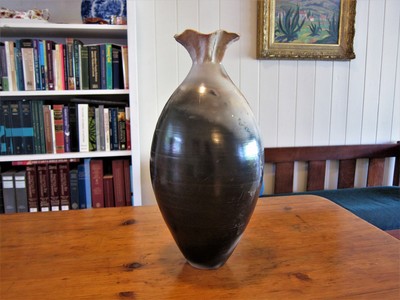


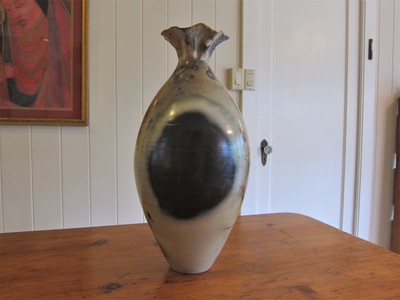
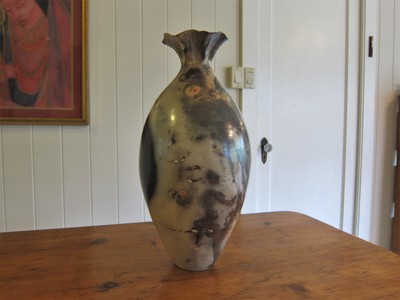
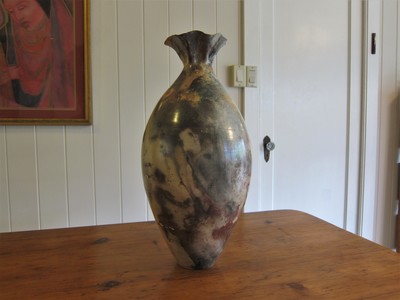
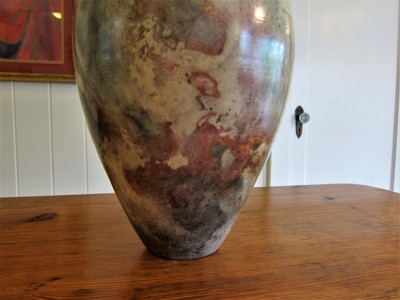
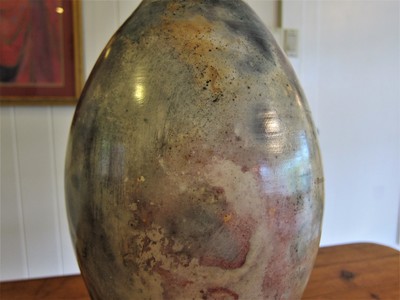
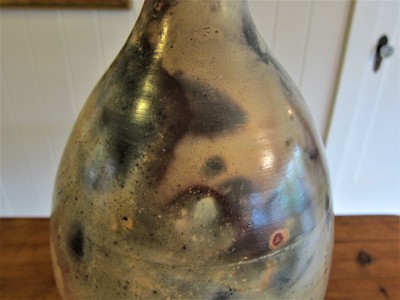
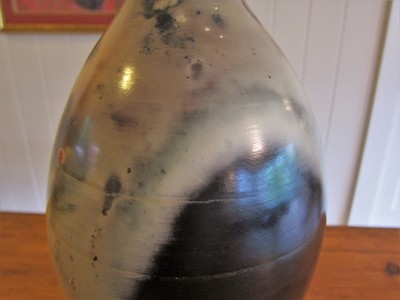
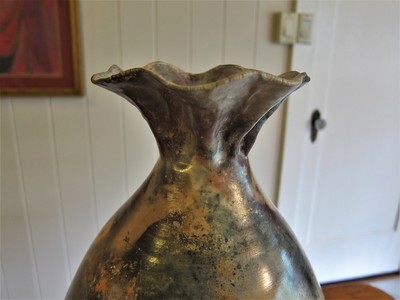
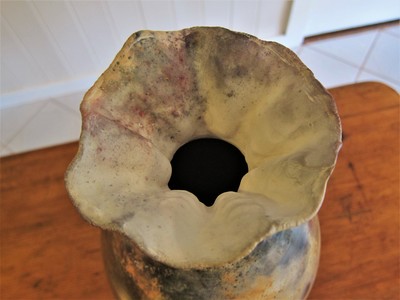
 RSS Feed
RSS Feed